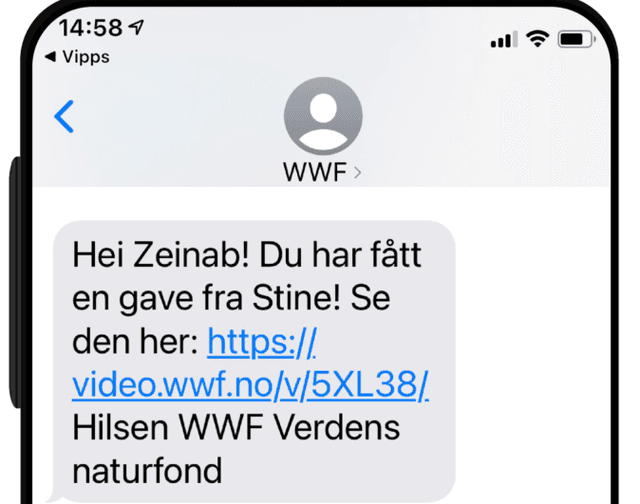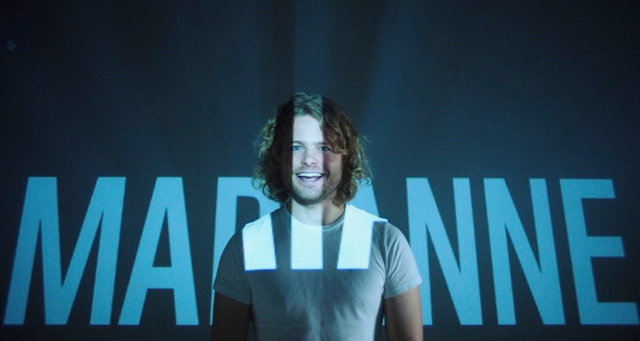WWF Norway: the ‘Name’ campaign
- Exhibited by
- Ina Toften
- Added
- January 13, 2022
- Medium of Communication
- Video
- Target Audience
- New donors
- Type of Charity
- Environmental
- Country of Origin
- Norway
- Date of first appearance
- 2021
SOFII’s view
This is excellent relationship fundraising in action. By switching to a personalised approach, WWF Norway showed their donors that they mattered to the organisation. They reinforced that each donor was an active participant in fighting for their good cause. An incredible 900 different donor names featured in an onboarding film and the charity even got the Prime Minister of Norway to add a subsequent thank you to volunteers. From personalised gift and greetings cards to coronavirus-dodging digital strategies, this is campaign we all can learn from.
Summary / objectives
With a view that successful fundraising is as much about supporters as it is about the non-profit and its mission, WWF Norway set out to personalise their fundraising campaigns.
Background
In Norway, there’s been a shift towards more personalised fundraising and marketing strategies in recent years and we really wanted to create personal messages for our supporters. So we started working with technology company Seen to develop smart strategies for personalising our campaigns.
Creator / originator
WWF Norway and technology company Seen
Special characteristics
Initially, we wanted to create a warm, genuine greeting on a one-to-one level for each new donor so we developed a personalised onboarding film in January 2020 (pictured above). WWF’s CRM system was integrated with Seen, so that the films could be merged and sent out on an automated basis without any human involvement as soon as the new member was registered. Seen did this for free, as part of their pro bono humanitarian and non-profit programme.
The automated onboarding film works around the clock, all year round. Regardless of when a person signs up, it only takes minutes before they receive the personal film by SMS or email.
The presenter of the film, Eirik Lindebjerg, works at WWF, so he speaks with genuine commitment. WWF thought this was a more authentic and honest approach than using an actor. Cheaper too.
The video is personalised in several ways. Importantly, Eirik speaks the name of the recipient of the film. During filming, he read out approximately 900 first names. That job took about 50 minutes, giving us an 85 per cent coverage rate of the Norwegian population, with any other names displayed graphically in each film, so that the experience is personal for them as well. Depending on whether a supporter signs up to fund WWF’s work for a clean and healthy ocean or to sponsor a polar bear for example, the film’s message changes to match the sponsorship.
The film can be viewed on a personal landing page. We chose not to promote other areas of our work or encourage conversion here, because we feel that onboarding should be characterised by genuine joy, without any hidden agenda. This was really well received, and it was a huge step for WWF in loyalty-building. Typically, supporters watch their film 2.8 times on average, unlike a commercial, where people tend to drop off after a few seconds.
Then in October 2020, WWF was awarded the national TV campaign in Norway. This is an annual fundraiser where people across the country take part in a ‘dugnad’ (Editor’s note: a ‘dugnad’ is a specific cultural phenomenon in Norway where people join together to support a good cause). Usually, around 240 million Norwegian kroner (€24.6 million) is collected, with as many as 100,000 volunteers going door-to-door to fundraise.
Of course, coronavirus restrictions meant that all door knocking was out of the question in 2020. Without door-to-door volunteers, we turned to digital channels, developing personalised films for all our digital fundraisers. The film was designed as a fictional news report that honoured those who had volunteered as digital fundraisers. It featured around 15 personalised elements in the film, both orally and graphically, and all actors and contributors lined up pro-bono.
We even got the Norwegian Prime Minister, Erna Solberg, to participate in a film where every single volunteer received a personal ‘thank you’ message. Stuff like that doesn’t happen every day, so it got a lot of attention and WWF managed to raise as much money as the previous year’s national campaign.
One of the key factors in its success is that people may not want to brag about themselves on social media, but when a credible, famous personality like the Prime Minister honours you for your efforts for a good cause, well, then of course you share the film on Facebook. It’s simple psychology. And the numbers underscore this. As many as 56 per cent of the 16,000 recipients saw the film they received, and the personalised film was shared 10,000 times on social media. And thus, a spread was created, with more and more digital fundraisers signing up to get involved. Because when you see that a friend is honoured by the Prime Minister, then you want to do the same yourself. On average, each film was watched more than twenty times.
The Norwegian Prime Minister was interviewed in the film about her reactions when ‘Name’ had volunteered for the fundraising campaign.
Building on the success of our customised video campaigns, our next step has been to launch personalised gift cards – and I believe that we are only the second non-profit organisation in the world to do this, following the Danish Refugee Council.
Traditionally, charity gift cards enable supporters to donate money in another person’s name, giving confirmation of the donation (either in paper or digital form) to the recipient. In such cases, the money has already been given away, without the recipient participating in the decision over where the funds should go to.
Working with Seen once more, our customisable gift cards allow the donor to choose which celebrity will convey a personal message of thanks to the recipient, how much he or she wants to give, when it should be sent, who it should be sent to and what occasion or messaging it should be linked to. This means, that you can choose a specific actor to say: ‘Happy Birthday, David!’ or ‘Merry Christmas, David.’
The most important part of all this, however, is that the recipient is allowed to choose what the money goes to, out of three-to-four predefined projects. This gives a real feeling of participation.
Both the giver and the recipient of the gift card receive a personal film, which pays tribute to them for their efforts for the cause. This, again, is a classic opportunity to share the message on social media, creating further spread and free advertising.
Senders and recipients are encouraged to help WWF further, by sending a personalised film to a friend, telling them about this gift card idea. This can easily be done by filling out a few simple details in the form on the landing page where a supporter’s own film is located. As the General Data Protection Regulation (GDPR) rules have been followed in all stages of the recruitment process, we gain a large list of people who we can communicate with in future. WWF can nurture these people – to encourage them to become monthly donors when they are ready for it.
Gift cards are perceived as surprising, fun, and it creates a warm feeling for both the recipient and the buyer. Recipients often feel starstruck at being hailed by a celebrity, who says his or her name. The gift doesn’t have to be of a large amount. In fact, it’s perceived as a low-threshold entry to become a donor to WWF, without any further obligations. A nice introduction to the cause, to awake empathy and commitment to further donations in future.
Merits
Our experiences of personalising our fundraising have been both hugely positive and exciting. We want our supporters to feel that our campaigns are relevant and that they matter. What better way to go about it than making those campaigns as much about them as possible?
Results
The results haven’t been announced yet, but we will update this case study when they come in.
Influence / impact
This one-off ‘Name’ campaign won a gold medal at the Transform Magazine Nordic Awards in the category of ‘Best Creative Strategy’.
Other relevant information
We first learned about this campaign on the EFA website here.
 View original image
View original image
 View original image
View original image
 View original image
View original image
 View original image
View original image
 View original image
View original image
Also in Categories
-
- Video fundraising
- Crisis fundraising

















